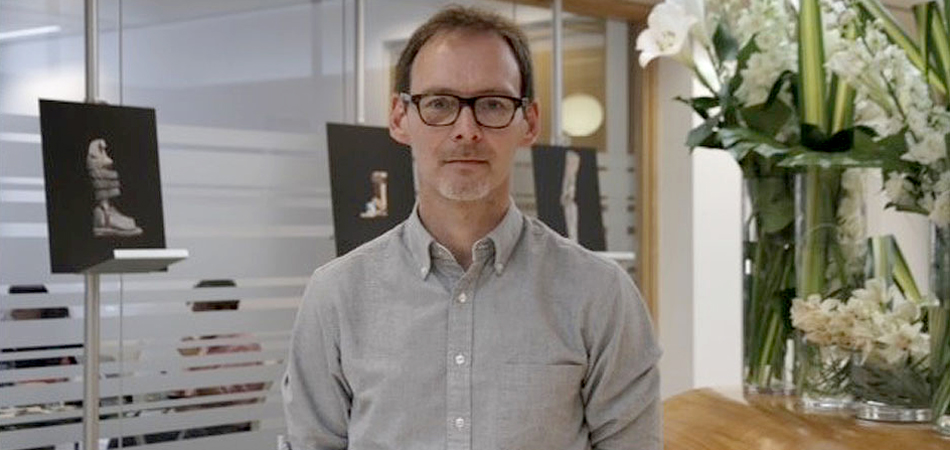
Should brands be doing more to help consumers ditch the doom scroll?
With increasing attention on the negative impact of social media on consumers’ mental health, a growing number of brands are advocating for IRL connection.
Head of Planning at JWT


Career to date:
2014 - JWT (Head of Planning)Neil Godber: Planning at JWT is in a unique position, spanning the spectrum from business strategy in the ‘Grand Strategist’ tradition of Stephen King, through the brand, to comms, execution and effectiveness. Therefore it’s absolutely vital we maintain that ability to operate up and down or side-to-side along that process.
What has made JWT great is its ability to build long term differentiating brand ideas. The need for these and the different people who can create them feels ever more relevant given the explosion in channels, consumer touch points and the diversity of agencies. It’s about looking for an ideological coherence in the brand, whether that is expressed as an idea, finding its purpose or a point of view.
That said, there are more specific needs and skill sets for planning to be at its best. The increasing availability of data means we can now build a greater insight into the definition of the problem and strategy upfront, measure it more quickly and help prove its effectiveness to clients. Also, the ability to innovate within digital and serve ongoing content means we need to integrate these skills into our day-to-day working.
Neil Godber: I started my career at Publicis where early on I was fortunate enough to be made responsible for the Army strategy, involved in D&AD winning work for the Depaul Trust and learnt retail skills from ASDA. I moved from big to small agencies in MCBD on Greene King and Branston, then to M&C Saatchi, where I planned Dixons “The last place you want to go”, which became the most awarded advertising of 2010, including APG Grand Prix and Jay Chiat Gold. I decided to fulfil an advertising ambition when I joined BBH to plan on Audi, Barclays, Dulux, Gordon’s and KFC, leaving when I was offered the chance to become the Deputy Head of Planning at JWT. I became Head of Planning at JWT London in July this year.
Neil Godber: I joined JWT for several reasons. It is the home of planning, and maintains an intellectually curious spirit to try to understand and answer some of the key questions we face today – how brands engage people in the modern age, the relationship between the dripping tap of content and superbowl moments and what skills an agency needs to be successful.
Wedded to this is our diversification of talent so we can field teams of brand, data, engagement and digital planners to create progressive solutions for clients’ problems, whether they are solving health issues via Benadryl, going beyond advertising for Shell in player-generated lights that illuminate football pitches or creating a fitness app to aid the Army recruitment process.
I alluded to this earlier, but JWT has been built on a philosophy that brands need big, differentiating, long-term ideas to be successful. These were often executed through FMCG brands via TV, given the predominance of category and media-spend at the time, but this approach endures and acts as the anchor for our activities today. We have a client base that offers incredible opportunities to define how people see and frame subjects and categories around the world and on a very local level. Finally, it’s a place where we want people to flourish to the best of their ability.
"Getting all those minds and skillsets working constructively together can be challenging unless you’ve got highly capable, curious people with diverse talents who can collaborate without ego"
Neil Godber: I’m personally proud of the broad range of activity we make for The Army, and our latest Kenco gangs work.
Neil Godber: I have been lucky enough to work with Nick Kendall who could open up any problem into a range of possibilities and always acts as a source of inspiration. The last lead he gave me was to look at Thomas Heatherwick, whose book Making is a fantastic read. Heatherwick has the ability to expose his thought process in an incredibly open and useful way.
Neil Godber: Cycling. I love the freedom of being purely in the moment, I commute on my bike every day. The mindlessness of being on the bike must somehow relate to the unconscious processing of James Webb Young’s ‘A Technique for Producing Ideas’ – I find things look clearer after a ride.
I’m also a big believer in the idea that doing interesting things will keep you interesting – so having young children is a blessing and a curse. I take inspiration from how everything has to be expressed in first principles with their perpetual use of ‘why’, rather than rely on assumptions and paradigms of knowledge. They also impose restrictions on time away during the week, so I make sure I absorb a bit of art by reading at least one poem a day. Their elegance and efficiency of language and insight would make them good planners.
"Google is the Tesco of the internet. It owns one of the most widely-viewed channels, and is beginning to build media, creative and research into its own proposition"
Neil Godber: As a planner working with mainstream brands trying to creatively solve their problems, I am excited by work that I can relate to, either as a great example of this in practice, or giving me something new I can apply in my day-to-day. So, the recent campaign I’ve most fallen in love with is Southern Comfort, celebrating those who are most comfortable with themselves. It feels like the fundamentals of planning are done well.
For creative execution, IKEA beds is elegantly done.
Neil Godber: Endlessly refreshing my Twitter feed and David Reviews.
Neil Godber: There are a lot of challenges, both internal and external. Internally, I think agencies need to embrace the different skills needed to manage the ever increasing availability and recyclability of content and how they get the best from their creatives. Externally, agencies need to learn how to work with Google’s strength. Google is the Tesco of the internet. It owns one of the most widely-viewed channels, and is beginning to build media, creative and research into its own proposition.
Neil Godber: I’ve always enjoyed pitching. Every agency wants to win, so there can be compromises on the work, but if the playing field is level, there are few better ways of selecting a creative agency. Internally, the opportunity to win a new exciting account creates a pressure cooker of anticipation and will, which is contagious. Any process that gets in the way of speed is flattened as teams become open, basics are questioned, everyone combines and ideas flow.
Neil Godber: Keep looking.
Looks like you need to create a Creativebrief account to perform this action.
Create account Sign inLooks like you need to create a Creativebrief account to perform this action.
Create account Sign in